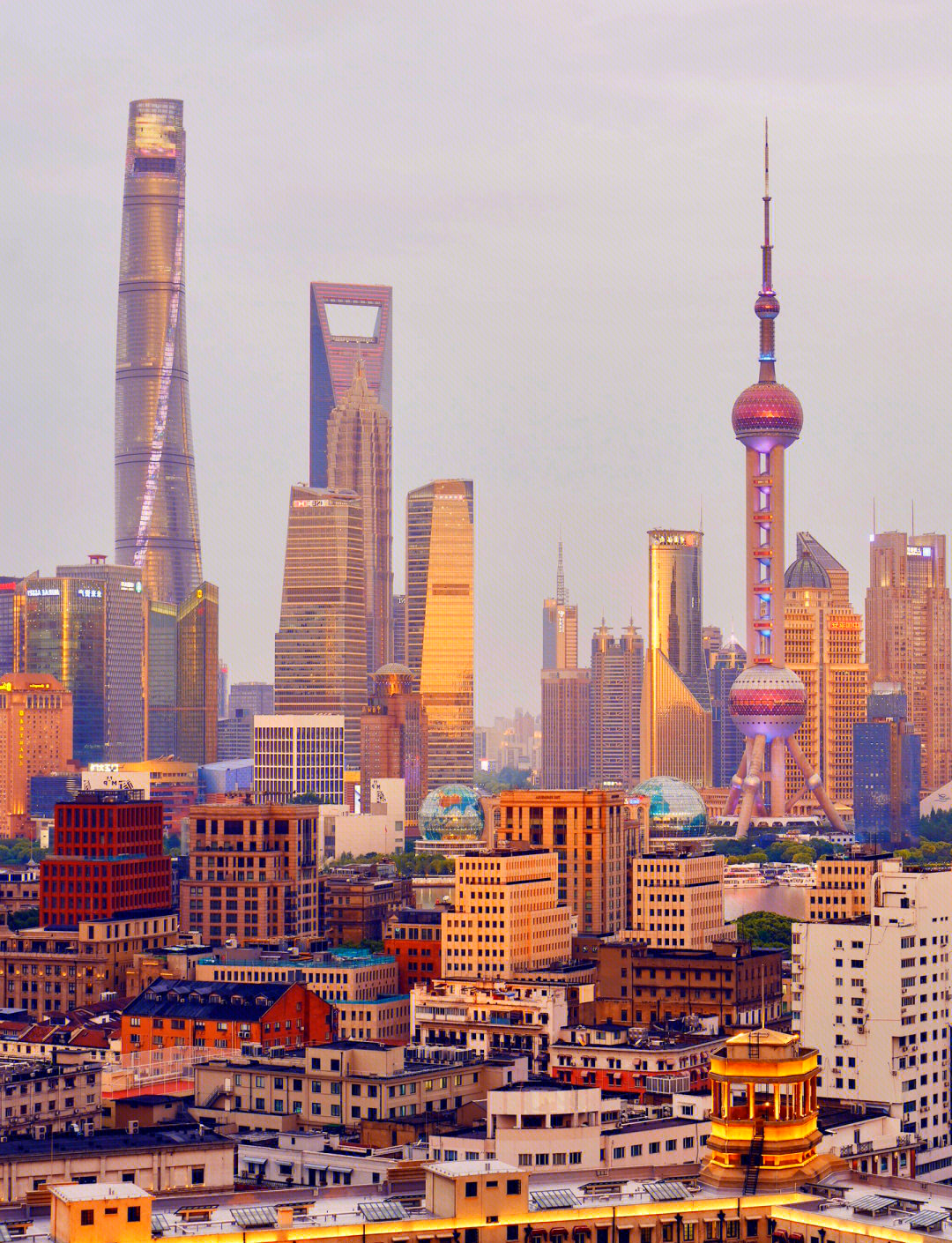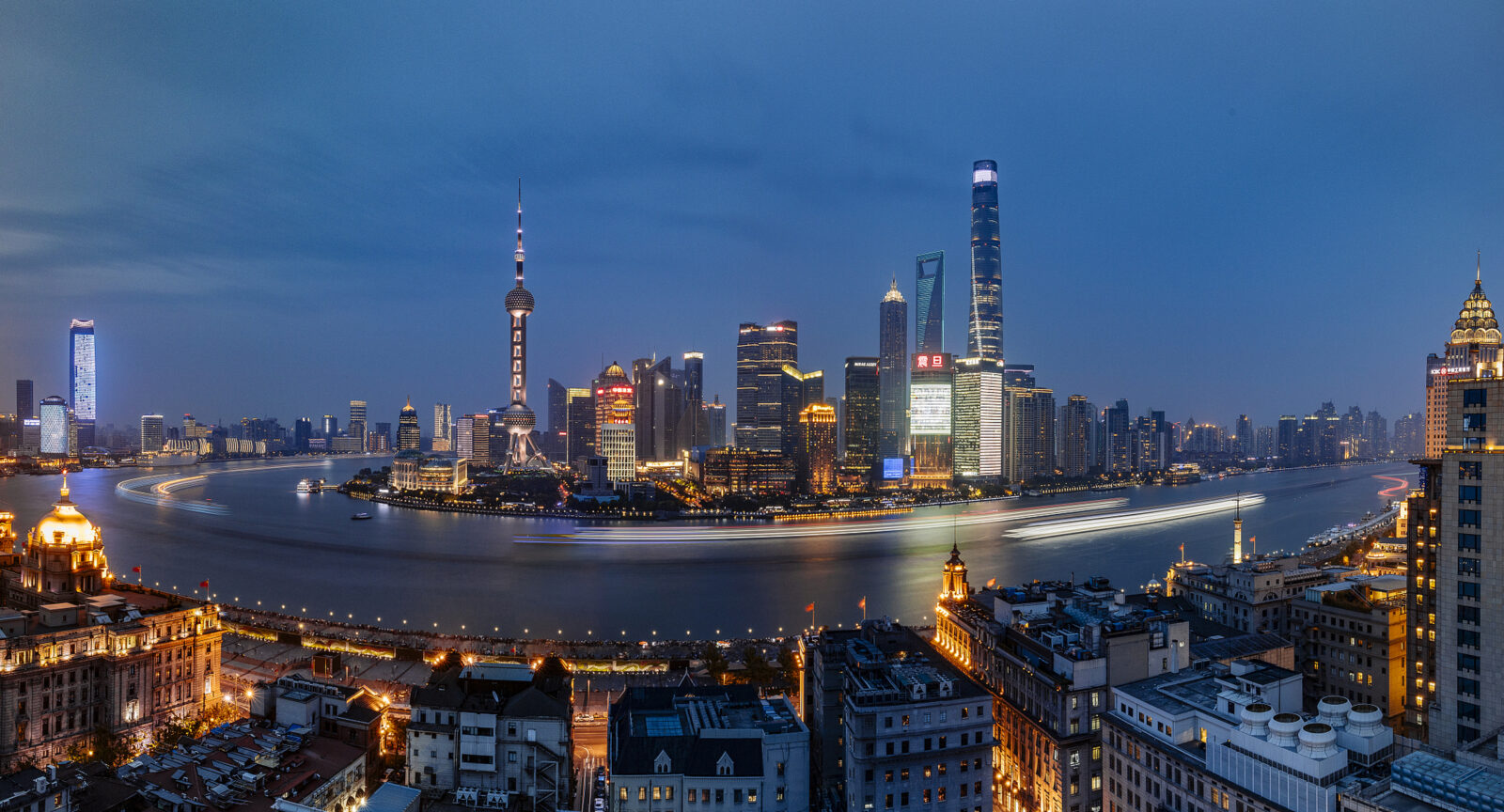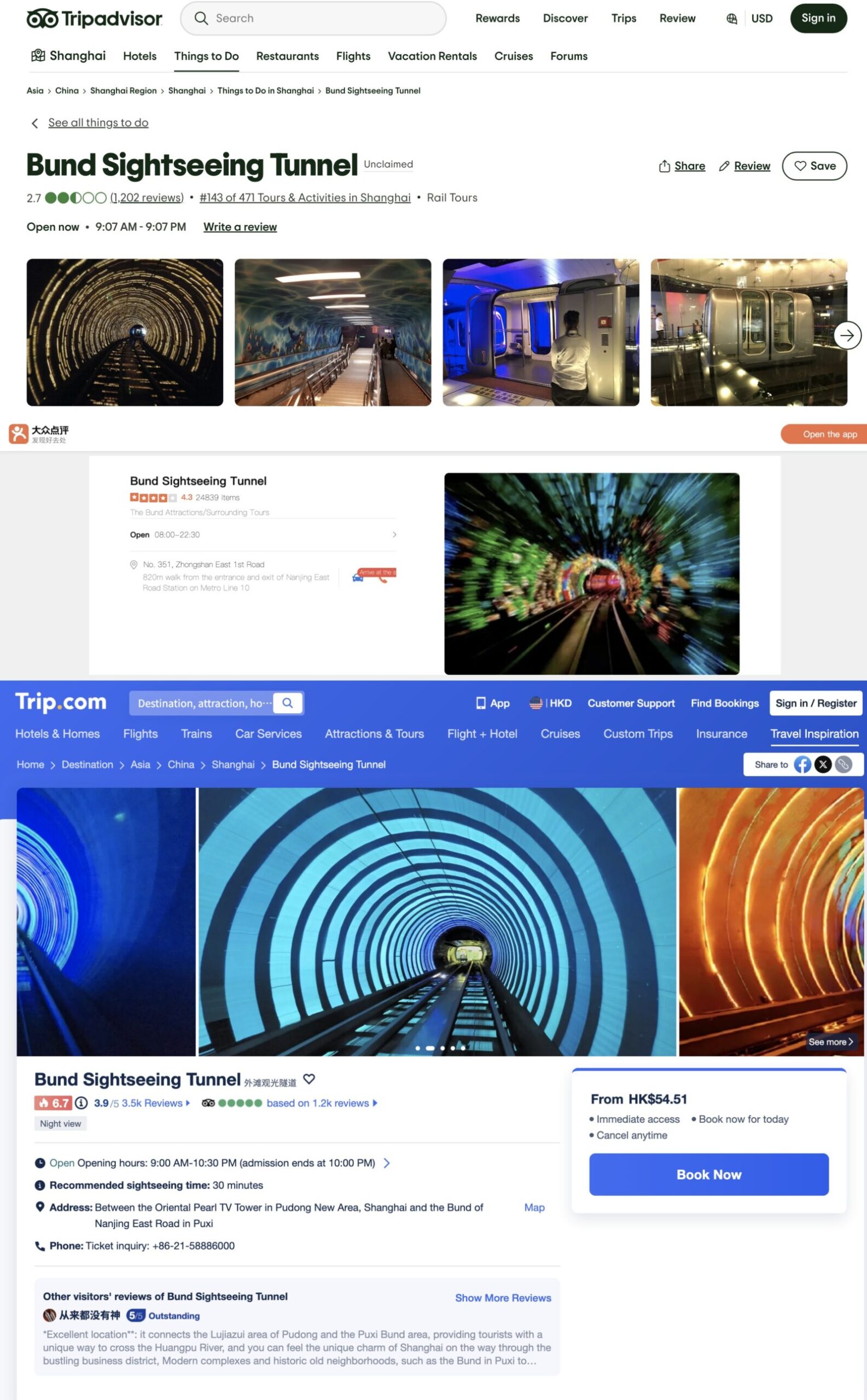Shanghai has this way of pulling you in — one minute you’re biting into a crisp, juicy dumpling, the next you’re staring at neon reflections on the Huangpu River. It’s a city that doesn’t fit neatly into a checklist. What to do in Shanghai? The best moments aren’t always at the top of a tower or on a tourist map. Sometimes, it’s getting lost down a quiet lane where laundry sways overhead, or sharing a beer with a stranger in a tiny bar. The sights matter, sure, but so do the smells, the sounds, and those moments when you forget where you came from. From smoky old teahouses to sleek skyline views, this guide shows you where to wander, what to taste, and how to soak up the kind of Shanghai that doesn’t shout for attention — but lingers long after you’ve left.
What Are Some Iconic Cultural Sites You Shouldn't Miss in Shanghai?
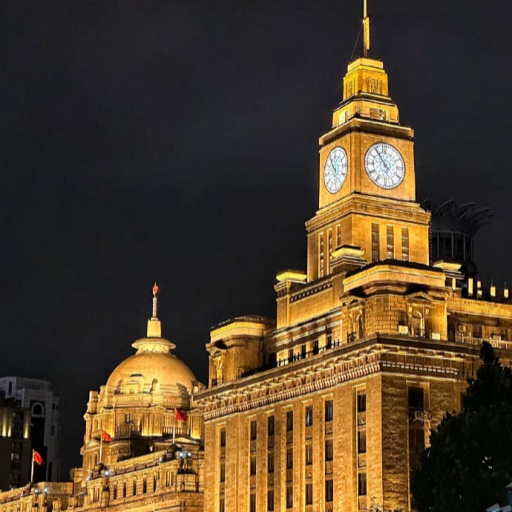
The Bund
Jing’an Temple – Where Ancient Architecture Meets Urban Vibe
Jing’an Temple sits right where old meets new in Shanghai. Located in a buzzing shopping district, it’s surrounded by modern skyscrapers and busy roads. But inside, things are calm. You’ll find peaceful courtyards, golden Buddha statues, and the smell of incense in the air. The temple has been rebuilt several times, but parts date back to the third century. Entry costs ¥50, and audio guides are available at the front desk.
Most locals come to Jing’an for both worship and quiet. It’s not just a tourist stop. You’ll see people lighting incense, offering fruit, or simply sitting under trees. If you’re into photography, the temple’s golden roof pops against glass towers nearby. Best time to visit? Mornings before the crowd rolls in.
You can reach it easily by Metro Line 2 or Line 7, exit at Jing’an Temple Station. There are cafes and bookstores nearby, so you can hang out after your visit. If you're looking for a calm break from the city’s pace, this spot delivers just that.
City God Temple – A Spiritual Core in the Old Town
This Taoist temple is right in the heart of Yuyuan Old Street. While it’s a major tourist draw, it’s also an active place of worship. Worshippers burn incense, chant prayers, and make offerings. It’s one of the oldest temples in Shanghai, with roots going back over 600 years. Entry fee is around ¥10–20 depending on the day.
Beyond the temple itself, the area around it is buzzing. You’ll find shops selling jade trinkets, local snacks like fried dumplings, and plenty of tea houses. The energy here is different—noisy, colorful, and full of old-world charm. Great for souvenirs, snacks, and people-watching.
Don’t miss the evening lights. Lanterns glow softly as shops close, and it feels like you’ve stepped into a painting. The temple is walkable from Yuyuan Garden Station (Metro Line 10), and it’s often included in local walking tours. Come hungry and curious.
Shanghai Museum – A Deep Dive into Chinese Art and History
Located in People’s Square, the Shanghai Museum is a treasure chest of Chinese culture. It houses over 120,000 pieces—from ancient bronzes to calligraphy and minority costumes. The building itself is shaped like a round heaven sitting on a square earth. Symbolism runs deep here. Entry is free, but you must book a timed ticket online.
The museum is quiet, spacious, and very modern. Each floor explores a different part of China’s past. Don’t skip the ceramics and jade galleries—they’re local favorites. English signs are everywhere, and audio guides in multiple languages help you go deeper.
Whether you're an art geek or just sheltering from summer heat, it’s worth a visit. Grab a snack from the food stalls in the square or relax on the nearby lawns. The museum opens daily from 9am to 5pm. Closed on Mondays.
Longhua Temple – The Oldest Temple in Shanghai
Longhua Temple is less crowded but deeply rooted in local history. Located in Xuhui District, it dates back to the Song Dynasty. The seven-story pagoda here is a major landmark. Inside, the temple complex feels peaceful, filled with red walls and ancient bells. Entry fee is ¥10, and you’ll need around an hour to explore.
The temple is an active site, especially during festivals. Locals come to pray, light candles, and write blessings. The area around it is more residential, so it gives you a quieter look at daily life. It’s a perfect spot if you want to escape tourist crowds.
To get there, take Metro Line 11 to Longhua Station. There’s a small park nearby and street food options just outside the gates. It’s not flashy, but it holds deep cultural weight. History, faith, and local life meet here in one peaceful space.
Want to see more different attractions? Check out this Shanghai guide we provide.
How to Explore Shanghai with Just 2 RMB and No U-Turns?

Wukang Mansion
Stop 1 – Wukang Mansion
Begin your journey in the heart of the Former French Concession. Wukang Mansion, a wedge-shaped building with a cinematic vibe, is one of the most photographed spots in Shanghai. Designed by Hungarian architect Laszlo Hudec in 1924, it's rich in character and full of stories.
This part of Shanghai is calm in the mornings. Sycamore-lined streets and Art Deco apartments give it a laid-back European feel. Locals walk dogs, sip lattes, and read newspapers on benches. If you want to soak in local life without rushing, this is the spot.
You won’t spend much money here unless you splurge on pastries. Walking is easy, signage is bilingual, and you'll find clean public toilets nearby. It's a soft start to a day filled with bigger sights ahead.
Visitor Information:
- Opening Hours: Exterior view open all day; cafés open 9 AM – 9 PM
- Ticket Prices: Free to visit building exterior; café prices vary (¥25–50 per drink)
- Location: 393 Wukang Road, Xuhui District, Shanghai
Stop 2 – Walk Through Fuxing Road to Reach the Huangpu Ferry Pier
From Wukang Mansion, stroll east along Fuxing Road. It’s a tree-shaded route with occasional antique shops, small galleries, and bakeries tucked between old villas. This is one of those rare walks in Shanghai where the air feels slow and you won’t be dodging bikes.The goal is to reach the Xuhui Riverside area, where the Huangpu Ferry departs.
Visitor Information:
- Opening Hours: Ferry runs daily from 7 AM – 10 PM
- Ticket Prices: ¥2 per ride (paid via WeChat, Alipay, or Transit Card)
- Location: Xuhui Riverside Public Ferry Dock, 531 Longhua East Road, Shanghai
Stop 3 – Arrive at Lujiazui and Visit the Financial Towers
On the Pudong side, you’ll land in Lujiazui, Shanghai’s financial hub. It’s home to some of the tallest buildings in the world: Shanghai Tower, Jin Mao Tower, and the Oriental Pearl TV Tower. You don’t have to go up all of them—pick one for the view. Shanghai Tower’s observation deck (¥180–230) is the highest in the city.
This area feels ultra-modern, almost sci-fi. Glass skywalks, shopping malls with Tesla showrooms, and cafés that feel like Apple stores are all around. The contrast with your morning walk in the Concession will be sharp—and fun.
Visitor Information:
- Shanghai Tower: Adults ¥180–230, Students ¥120
- Oriental Pearl: ¥160 full ticket, ¥85 kids (1.0–1.4m height)
- Jin Mao Observatory: ¥120
Stop 4 – Head to Nanjing Road Pedestrian Street for Shopping and Street Performances
Take Metro Line 2 from Lujiazui to East Nanjing Road Station—just 2 stops. When you exit, you’ll be right in the middle of Shanghai’s most famous shopping street.
You’ll see everything from luxury brands to snack stalls selling fried squid and sugar-coated fruit. It’s noisy, colorful, and packed with energy. Street performers play violin, paint portraits, or do bubble tricks for kids. This is a good place to buy souvenirs or try cheap eats.
Visitor Information:
- Opening Hours: Shops generally open 10 AM – 10 PM
- Ticket Prices: Free to walk; shopping and food costs vary
- Location: Nanjing East Road, from People's Square to the Bund, Shanghai
Stop 5 – End the Day at the Bund and the Peace Hotel Rooftop
Finish your day with a sunset stroll along the Bund. The riverwalk is just 5–10 minutes from Nanjing Road. You’ll see couples, wedding photoshoots, and travelers soaking up the skyline view of Pudong.
Right across the street sits the historic Peace Hotel. Head up to its rooftop bar (entry via the Swatch Art Peace Hotel lobby). Drinks aren’t cheap (around ¥80–100 for a cocktail), but the view is worth it.
The rooftop isn’t overly fancy—just a classic spot with jazz music and retro charm. It’s a great place to reflect on your 2 RMB journey through Shanghai without repeating a single stop.
Visitor Information:
- The Bund: Open 24 hours
- Peace Hotel Rooftop Bar: 5 PM – Midnight
- Ticket Prices: Bund is free; drinks at rooftop bar ~¥80–100
- Location: 20 Nanjing East Road, Huangpu District, Shanghai
What Are the Best Places in Shanghai for a Family Trip?

Shanghai Disneyland
Shanghai Disneyland – A Magical Experience for All Ages
When you're thinking about what to do in Shanghai with kids, Disneyland usually tops the list—and for good reason. It’s not just another theme park. It’s Disney with a Chinese twist. You’ll find the usual characters and rides, but also new ones like the Tron Lightcycle Power Run, which you won’t see in other Disney parks.
The park is split into themed zones like Adventure Isle, Fantasyland, and Tomorrowland. Little ones love the “Once Upon a Time” castle shows, while older kids (and grownups) go straight for roller coasters. Food inside the park includes both Chinese and Western options, so picky eaters are safe. Just expect long lines—arrive early, book online, and definitely use the official app to track wait times.
One pro tip: stay at one of the Disney hotels if your budget allows. They offer early park access and themed rooms that kids go nuts for. It’s more expensive, but the convenience is hard to beat. Shanghai Disneyland isn’t cheap, but for families, it’s a full-day event worth every yuan.
Zhujiajiao Water Town – History and Fun Just Outside the City
If your kids aren’t into rides and you’re still wondering what to do in Shanghai that feels more local, Zhujiajiao Water Town is your answer. This ancient town is just under an hour from the city center and offers something totally different. Think stone bridges, little boats, and narrow streets lined with snack stalls.
You can hop on a traditional wooden boat for a quick cruise, which is usually a hit with kids. Along the canals, you’ll spot candy stalls, rice cake shops, and plenty of quirky souvenirs. There are also museums and old buildings to wander through, giving everyone a taste of what life was like in old Shanghai.
It’s flat and walkable, so strollers work fine here. Try to go on a weekday if you can—the weekends get packed. Also, bring some small change or Alipay—weirdly, some snack vendors still prefer cash. All in all, Zhujiajiao is chill, fun, and full of charm for a day trip with the whole crew.
What Local Foods Should You Try in Shanghai?
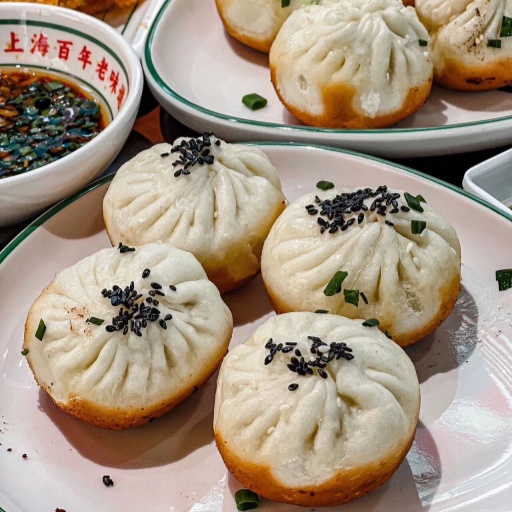
shengjianbao
Must-Try Dishes You Can’t Miss
Shanghai has its own flavor—sweet, light, and comforting. One dish you simply can’t skip is xiaolongbao, or soup dumplings. These little parcels burst with hot broth and savory pork, and you’ll find locals queuing up for them daily. Another favorite is scallion oil noodles, a humble yet addictive bowl of chewy noodles tossed in scallion-infused oil and soy sauce. You might also spot pan-fried pork buns, known as shengjianbao—crispy on the bottom, soft on top, and stuffed with juicy meat.
Feeling adventurous? Try drunken chicken, marinated in Shaoxing wine and served cold, or braised pork belly (hong shao rou), a melt-in-your-mouth delicacy beloved by Shanghainese grandmas. Don’t skip dessert: sweet tofu pudding or sticky rice cakes are local staples. Many dishes are mild in spice, making Shanghai food a great choice for all palates.
The best part? You can try all of this without breaking the bank. A full meal of xiaolongbao and noodles costs around ¥30–¥50. It’s easy to find these dishes at casual spots across the city, from street stalls to sit-down joints.
Best Local Eateries to Experience Real Shanghai Flavors
Some of the best places for authentic Shanghai eats are low-key, but legendary. Head to Jia Jia Tang Bao (near People's Square) for some of the juiciest xiaolongbao in town. The shop is small, cash-only, and always packed—but it’s worth the wait. For crispy shengjianbao, try Xiao Yang Sheng Jian, a local favorite with several branches.
Craving noodles? A Niang Mian Guan near Fuxing Park is a beloved spot that does scallion oil noodles right. Want a nighttime food crawl? Wander along Huanghe Road near Nanjing West Road for street snacks, cheap eats, and late-night dumplings.
Keep your Alipay or WeChat Pay ready—many smaller places don’t accept foreign credit cards. Also, come early or late to avoid peak dining times. Most of these eateries don’t take reservations and have limited seating.
In short, skip the hotel buffet and dive into the real deal. Whether you’re a food lover or just hungry after a long day, Shanghai’s local eats will hit the spot.
What Day Trips Can You Take from Shanghai?
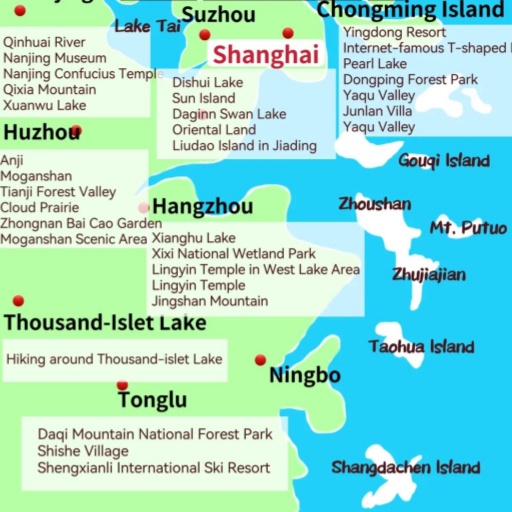
Map of Shanghai and Surrounding Areas
Suzhou – Gardens, Canals, and Classical Art
Thinking about what to do in Shanghai beyond city limits? Suzhou is always a solid pick. It’s just a quick 30-minute high-speed train ride from central Shanghai. The vibe here is way more laid-back—think tiny canals, stone bridges, and elegant gardens. Locals like to call it the “Venice of the East,” and honestly, they’re not wrong.
The big highlight? Classical Chinese gardens. The Humble Administrator’s Garden and the Lingering Garden both made UNESCO’s list—and for good reason. These aren’t just pretty spots. They’re packed with culture, with winding paths, koi ponds, and poetic pavilions. Don’t miss the Suzhou Museum either—it’s got modern architecture by I.M. Pei and ancient artifacts inside.
It’s super walkable, especially around the Pingjiang Historic District. Cobblestone streets, teahouses, and traditional opera echoes fill the air. If you're into slow travel and aesthetics, Suzhou nails it. It’s perfect for a relaxed day trip that feels miles away from the Shanghai rush.
Hangzhou – Tea Fields and Lakeside Serenity
Still wondering what to do in Shanghai on your second day? Hop on a train to Hangzhou. It’s about 1.5 hours away and totally worth the trip. The city wraps around the legendary West Lake, and the view? Picture-postcard perfect—especially in the early morning mist.
You can rent a boat or walk the lake’s edge. Bridges, temples, and ancient trees line the paths. If you’re a tea lover, don’t miss Longjing Village nearby. It’s home to China’s famous Dragon Well tea. You can even watch farmers picking leaves or sip a cup with a view of the hills.
Hangzhou also serves up some serious bites. Try beggar’s chicken or Dongpo pork in old-town restaurants. Whether you're into nature, culture, or food, Hangzhou hits all the right notes—and gives your Shanghai trip a whole new layer.
Wuxi – A Lesser-Known Gem with Natural Beauty
If you want to avoid big crowds but still want something cool to add to your “what to do in Shanghai” list, Wuxi might just be your wildcard winner. It’s lesser known, but that’s what makes it a gem. It’s tucked next to Taihu Lake and just over an hour away by bullet train.
The star attraction here? Lingshan Grand Buddha. This massive bronze statue stands over 88 meters tall—super impressive up close. There’s also a huge cultural park around it with temples, fountains, and a massive hand-shaped plaza. It’s very photogenic and quite peaceful.
Nature lovers will also dig Yuantouzhu, or “Turtle Head Island.” It’s on Taihu Lake and famous for cherry blossoms in spring. The walking trails are quiet, scenic, and ideal for anyone wanting to slow down. It’s a chill, off-the-radar escape from the Shanghai buzz.
Frequently Asked Questions (FAQs)
Q: What apps should I download before traveling to Shanghai?
A: Start with Alipay and WeChat, since they handle everything from payments to metro rides. Both support foreign cards now, but set them up before your trip. Next, grab MetroMan Shanghai or Explore Shanghai—these make subway transfers super easy. Trip.com is great for booking trains, hotels, and attractions with English support. If you’re a foodie, install Dianping for local restaurant reviews—it’s China’s Yelp, though mostly in Chinese. Use Google Translate or Pleco for on-the-spot translations. Want a ride? DiDi works like Uber and has an English interface. Last tip: keep ExpressVPN handy in case you need to access blocked websites. These apps will save time, avoid confusion, and help you move like a local.
Q: Are there any apps or tools locals use to find cool spots in Shanghai?
A: Yep. Locals love Xiaohongshu (RED) for finding cafes, exhibitions, and niche places. The app’s mostly in Chinese, but image search and translation tools help. For transport, MetroMan shows the best subway routes. Want food deals? Dianping is like China’s Yelp, packed with reviews. If you're figuring out what to do in Shanghai on the fly, download Baidu Maps or Amap—they're better than Google here. And don’t forget WeChat: many event invites, tickets, and discounts are shared in group chats or official accounts. Tip: search for “Shanghai Weekly” WeChat articles. They often list what’s on over the weekend.
Q: Is it safe to walk around Shanghai alone at night?
A: Absolutely. Shanghai is one of the safest big cities in the world. Locals walk alone after midnight, especially in areas like Jing’an, Xuhui, and Pudong. Street lighting is excellent, and there are surveillance cameras pretty much everywhere. Of course, you’ll want to stay alert—especially in less touristy neighborhoods. If you’re still asking what to do in Shanghai at night alone, try night markets, the Bund promenade, or hopping between small cafés that stay open late. Want to feel extra safe? Share your location via WeChat with a travel buddy and stick to areas near metro exits.
Q: Can I use foreign credit cards at major attractions and restaurants?
A: Kind of. Big hotels, luxury malls, and top attractions (like Shanghai Tower) usually accept Visa and Mastercard. But smaller shops, metro stations, and even some chain restaurants don’t. Locals rarely carry cash, so QR code payments rule here. If you’re serious about what to do in Shanghai and want smooth payments, link your card to Alipay or WeChat Pay using the international “Tour Pass” feature. Just bring a backup card, and keep some RMB cash for backup—maybe ¥300–¥500. That should cover emergencies and places that refuse foreign cards.
Q: Where can I buy affordable SIM cards near popular tourist areas?
A: The easiest place? Pudong or Hongqiao Airport. Look for China Unicom, China Mobile, or China Telecom counters. They offer tourist packages from ¥100–¥200 for 10–20GB of data. You can also find shops near People’s Square and Nanjing Road. Just bring your passport for ID. Don’t trust random kiosks offering deals too good to be true. If you’re figuring out what to do in Shanghai online (especially using maps or translations), a good SIM is your best friend. Bonus: many SIMs include local call time and allow hotspot sharing for your travel buddy.
Q: What are the best local markets for souvenirs that aren’t tourist traps?
A: Skip the overpriced stalls at Yuyuan and try Fuyou Street Market, near the Old City—prices are better, and you’ll find vintage items, calligraphy tools, and jade trinkets. Another spot? Tianshan Tea Market in Changning District—it’s where locals buy tea, and you can try before buying. If your version of what to do in Shanghai includes real local vibes, check out Hongqiao Pearl Market—it’s not just pearls, but also local crafts and accessories. Bargaining is normal, so don’t be shy. And remember: cash or Alipay are usually preferred.
Q: Are there good rooftop bars with a view of the Bund that aren't overpriced?
A: Yes! Try VUE Bar at Hyatt on the Bund—great view, decent drinks, and fewer crowds if you go before 7 PM. POP Bar in Three on the Bund also hits the sweet spot for price vs. view. If you're figuring out what to do in Shanghai after dark, skip tourist traps and look for weekday sunset hours—most places have deals. Want something low-key? Bar Rouge has a dress code but is often expat-friendly. Tip: check Dianping for happy hour info before you go.
Q: How do I take the ferry across the Huangpu River like a local?
A: Super easy—and just ¥2! Head to the Dongchang Road Ferry Pier in Lujiazui or Shiliupu Pier near the Bund. Ferries run every 10–15 minutes and the ride takes under 10 minutes. Locals use it daily to commute. If you're planning what to do in Shanghai on a budget, this is a scenic and practical way to cross the river without a fancy cruise. Just scan the QR code at the terminal with WeChat or Alipay—or tap your transport card. It’s quick, breezy, and a great local moment.
Q: Can I visit a traditional Chinese opera or cultural performance in Shanghai?
A: Totally. Head to Yifu Theater near People’s Square for Peking opera shows—some with English subtitles. For something flashier, check out Shanghai Grand Theatre for modern takes on traditional shows. If your idea of what to do in Shanghai includes deep cultural dives, these spots are a win. Book tickets on Trip.com or through the official venue sites. Prices range from ¥80–¥300. Try going early—they often host weekend afternoon shows perfect for travelers with tight schedules.
Q: What’s a non-touristy neighborhood in Shanghai worth spending a full afternoon in?
A: Go to Caojiadu or Dapuqiao. These areas blend local living with interesting architecture, indie cafes, and leafy alleys. If you're wondering what to do in Shanghai beyond the Bund and Disney, try just sitting in a local teahouse here and watching daily life pass by. Walkable, real, and photogenic, these neighborhoods are perfect for slow travel. Plus, food here is often cheaper and more authentic than in tourist areas. Use Baidu Maps to find hidden spots like rooftop teahouses or mini bookstores with attached coffee bars.
Want more China travel ideas? Check out our city guides on Beijing, Shanghai, Guangzhou, and Chengdu.
